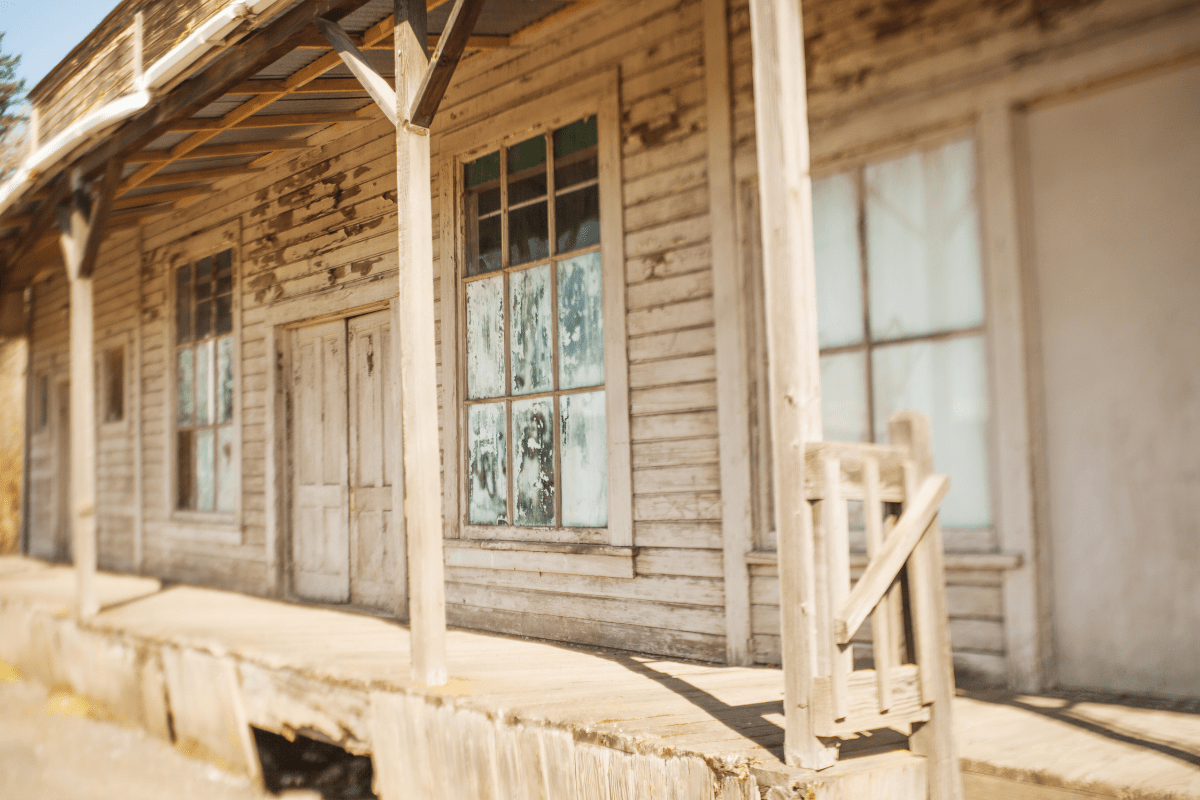Let's be honest… finding a college that won't leave you eating ramen for the next 20 years feels about as likely as finding a parking spot on campus during finals week. But here's the plot twist: Oklahoma might just be the higher education hero you didn't know you needed, offering quality degrees without requiring you to sell a kidney on the black market.
The big picture (spoiler: it's surprisingly good)
Oklahoma's higher education system is having a moment, and not just because football season makes everyone temporarily forget about tuition bills. The state's 25 public institutions and handful of private colleges are serving over 169,000 students, with enrollment jumping 4.5% in 2024. That's the fourth year in a row of growth, which either means Oklahoma's doing something right or everyone else is doing something very, very wrong.
The real kicker? Average student debt in Oklahoma sits at $27,876, while the national average lounges around $29,000+. Sure, it's still enough to make your wallet cry, but at least it's crying slightly less than your out-of-state friends.
Your major players: OU and OSU
When most people think Oklahoma higher education, two schools dominate the conversation like that one couple who won't stop talking about their CrossFit routine. But unlike that couple, these universities actually have something worth bragging about.
University of Oklahoma: Where tornadoes meet textbooks
OU sprawls across 3,326 acres in Norman, just 20 miles from Oklahoma City, which means you're close enough for internships but far enough away that your parents can't "just drop by" unannounced. With 34,523 students and a #132 national ranking, OU manages to balance big-school energy with actual academic cred.
The meteorology program ranks in the top five nationally, which makes sense when you realize the National Weather Center is literally on campus. Nothing says "hands-on learning" quite like having NOAA and the Storm Prediction Center as your neighbors. The petroleum engineering program also cracks the top 10, because this is Oklahoma and oil is basically a food group here.
Here's what your wallet needs to know:
- In-state tuition: $9,595-$9,797
- Out-of-state tuition: $26,665-$27,377
- Financial aid reality: 83% get help
- Average aid package: $10,025
The recent jump to the SEC means football Saturdays just got more intense, but don't worry… the 87% first-year retention rate suggests most students survive the experience. Plus, with median salaries hitting $59,300 ten years after graduation (73% higher than the national median), you might actually be able to afford those game tickets someday.
Oklahoma State University: The value champion
Located in Stillwater, 60 miles from both OKC and Tulsa, OSU is basically that friend who lives just far enough away that visiting requires actual planning. With 26,043 students and the title of "best value public university" in Oklahoma, OSU proves you don't need to break the bank for a solid education.
The real showstopper? Over 50% of students graduate without any debt. Let that sink in. HALF. NO DEBT. It's like finding a unicorn, except the unicorn is orange and really into agriculture.
Speaking of agriculture, OSU's land-grant status means their ag programs are legit. The vet school ranks #26 nationally, and surprisingly, their aerospace engineering program (#50) actually outranks OU's. The Spears School of Business sits in the top 20% nationally, with 91% of grads landing jobs within six months.
Cost breakdown for the budget-conscious:
- In-state tuition: $9,244-$10,234
- Out-of-state tuition: $29,620
- Greek life participation: 13%
- Dining venues: 30+
- Debt-free graduates: 50%+
Private schools that might be worth the splurge
Sometimes you want a smaller pond, even if it costs more to swim in it. Oklahoma's private colleges offer unique experiences, though your bank account might need therapy afterward.
University of Tulsa: Engineering excellence with a side of job guarantees
With just 3,700-4,000 students and a 10:1 student-faculty ratio, TU feels more like a educational boutique than a academic factory. The petroleum engineering program ranks #1 among private universities and #4 nationally, which is impressive until you see the price tag.
Brace yourself:
- Annual tuition: $49,546
- Students receiving aid: 94%
- Average aid package: $58,905
- Actual cost after aid: $37,856
- Still expensive? Yes
- Worth it? Maybe
The cybersecurity program has serious street cred… TU was one of the first 14 schools with CAE designation back in 2000, and 70% of their Cyber Corps graduates end up working for the NSA or CIA. Plus, they offer a job placement guarantee: 97% employed within six months or they'll cover your first semester of grad school. It's like insurance for your future, except it actually works.
Oklahoma City University: Downtown vibes, Methodist values
OCU brings 2,748 students to downtown Oklahoma City, offering urban convenience with a side of religious heritage. The block tuition system ($30,698 for 12-16 credit hours) actually makes budgeting easier, like a subscription service for education.
The Ann Lacy School of Dance and Entertainment has national recognition, perfect if your career goals involve more pirouettes than PowerPoints. With over 90% of students receiving financial aid averaging $24,450, the net cost drops to around $22,862. Still not cheap, but at least you can walk to actual restaurants instead of surviving on dining hall mystery meat.
Oral Roberts University: Where faith meets finals
ORU serves 5,365 students with a unique "whole person" education approach, which basically means they care about your soul as much as your GPA. At $33,800-$35,470 annually, it's pricier than public options but includes mandatory chapel attendance and required on-campus living for students under 22.
The LEAP program offers up to $15,000 in graduation credits toward loans, and their Handshake platform connects students with 200,000+ employers. Just remember: the "whole person" thing is serious. This isn't the place for sleeping through Sunday mornings.
Community colleges: Your wallet's best friend
Here's a life hack that financial advisors don't want you to know: starting at a community college can save you $22,000-$30,000 compared to going straight to a four-year school. It's like getting the same destination with a layover, except the layover saves you enough money to actually eat something besides instant noodles.
Tulsa Community College leads the pack
TCC serves over 20,000 students across four campuses, charging just $146.33 per credit hour. But here's where it gets crazy: the Tulsa Achieves program provides FREE tuition for Tulsa County residents. Free. As in zero dollars. As in your biggest expense might be parking.
With 91+ career programs and transfer agreements with every major Oklahoma university, TCC isn't just a stepping stone… it's a catapult. The University of Tulsa even offers special scholarships for TCC grads, making that expensive private education suddenly more accessible.
Oklahoma City Community College keeps it affordable
OCCC enrolls 18,549 students and charges just $135.29 per credit hour, making it cheaper than most streaming subscriptions (and arguably more useful). Located strategically near Tinker Air Force Base, OCCC serves military families and offers 46 different degree and certificate programs.
The best part? Transfer agreements guarantee admission to four-year schools if you maintain decent grades. It's like having a backup plan for your backup plan.
Rose State College: Free tuition, seriously
Rose State in Midwest City runs the "Ticket to Rose" program, offering free tuition to qualifying local high school graduates. With 8,809 students and costs of $167.67 per credit hour (if you don't qualify for free), it ranks in the top 20% of Oklahoma community colleges.
Regional universities: Hidden gems across the state
Not everyone wants the big university experience or the private school price tag. Oklahoma's regional universities offer solid education without the overwhelming crowds or crushing debt.
University of Central Oklahoma brings forensics to the suburbs
UCO in Edmond serves 12,148 students in the OKC metro, charging $284.07 per credit hour. The forensic science program has national recognition (CSI: Oklahoma, anyone?), and the Wall Street Journal ranked them in the top 10 nationally for student engagement. With an 81.8% acceptance rate, they're selective enough to maintain standards but not so selective that you need perfect everything to get in.
Langston University: Making history, keeping costs low
As Oklahoma's only Historically Black College and University, Langston offers the lowest costs among four-year institutions at just $224.27 per credit hour. Founded in 1897 as the westernmost HBCU, Langston recently forgave $4.65 million in student debt because apparently they actually care about students' financial wellbeing.
They house Oklahoma's only Doctor of Physical Therapy program and maintain a 100% acceptance rate. If you're looking for affordable education with a side of history, Langston delivers both.
Northeastern State University serves Cherokee Nation
Located in Tahlequah with a 99% acceptance rate, NSU charges just $250.40 per credit hour (third-lowest in the state). With 25% Native American enrollment and Oklahoma's only optometry college, NSU offers specialized programs you won't find elsewhere.
Financial aid that actually helps
Here's where Oklahoma really shines: the financial aid programs actually work. It's like finding out your insurance actually covers something… shocking but delightful.
Oklahoma's Promise: The game changer
This program covers full tuition at public institutions, but you need to plan ahead. Apply between 8th and 11th grade, maintain a 2.5 GPA, and meet income requirements:
- Families with 1-2 kids: $60,000 limit
- Families with 3-4 kids: $70,000 limit
- Families with 5+ kids: $80,000 limit
In 2022-23, 14,167 students received $62.6 million through this program. That's a lot of free education.
Other money-saving options
The Oklahoma Tuition Aid Grant provides up to $1,000 for public schools or $1,300 for private ones. Score in the 99.5 percentile on standardized tests? The Academic Scholars Program covers full tuition.
Tribal nations also step up big time. The Choctaw Nation offers $3,000-$5,500 per semester based on GPA, while the Cherokee Nation Foundation runs various scholarship programs.
Where the jobs are (and what they pay)
A degree is great, but eating is also important. Oklahoma's job market actually offers solid opportunities in several growing industries.
The aerospace and defense sector employs over 206,000 people and generates $44 billion annually. With 1,100+ aerospace companies including Tinker Air Force Base, engineers are in constant demand. The state even offers tax credits specifically for aerospace engineers, because apparently Oklahoma really wants you to build planes here.
Energy remains huge, contributing $55.7 billion to state GDP. Starting salaries for petroleum engineers hit $65,000-$75,000, which suddenly makes that engineering degree look a lot more attractive. The industry's diversifying into renewable energy too, so you can save the planet while paying off student loans.
Healthcare employs 123,000+ in OKC alone, with starting salaries ranging from $45,000-$65,000. A recent $35 million federal biotech hub grant promises continued growth.
The tech sector contributes $6.5 billion to state GDP, with computer science grads commanding $55,000-$70,000 starting salaries. Paycom's success proves Oklahoma can grow major tech companies, not just wheat and oil wells.
Making your choice
Choosing a college in Oklahoma really comes down to what matters most to you. Want the traditional college town experience? OU in Norman or OSU in Stillwater deliver that in spades. Need urban opportunities? OCU and University of Tulsa put you in the city center. Looking for rock-bottom prices? Start at a community college or check out Langston.
The smartest financial move? Apply for Oklahoma's Promise before high school gets too crazy, then start at a community college and transfer. You'll save tens of thousands while still ending up with the same degree as everyone else.
The bottom line
Oklahoma's higher education system won't win any glamour contests, but it absolutely crushes it on value. With growing enrollment, comprehensive financial aid, and actual job opportunities after graduation, the state offers something increasingly rare in American higher education: a chance to get a quality degree without destroying your financial future.
Whether you're dreaming of studying tornadoes at OU, wrangling cattle at OSU, or starting cheap at TCC, Oklahoma has options that won't require selling your soul to Sallie Mae. And in today's educational landscape, that's worth its weight in oil… er, gold.





